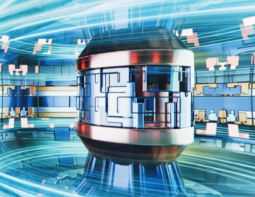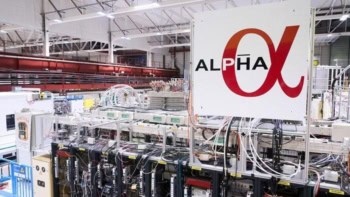J J Pireaux explains how IUVSTA is reaching out to developing nations

IUVSTA provides a global platform for the promotion, proliferation and education of vacuum science, techniques and applications. As an international federation of 30 national vacuum societies, it represents some 15,000 scientists, engineers and technicians worldwide. J J Pireaux was elected president of IUVSTA in 2010 for a tenure of three years. He is a surface scientist who for the last decade has been director of the Interdisciplinary Laboratory of Electron Spectroscopy (LISE) at the University of Namur in Belgium.
What is IUVSTA’s role within the international vacuum community?
IUVSTA aims to stimulate international collaboration in vacuum science, including related multidisciplinary topics such as the solid–vacuum interface. It focuses on educational activities (organizing technical training courses and publishing educational material), on scientific activities (organizing thematic workshops and international conferences) and on awarding prizes and scholarships. Its actions are all related to one of the research themes covered by its divisions, namely applied surface science, electronic materials and processing, nanometre structures, plasma science and techniques, surface engineering, surface science, thin films, vacuum science and technology, and the newly created biointerfaces section. IUVSTA focuses a significant part of its activities in developing countries, helping to educate technicians and scientists in those areas of the world about the modern technologies relevant to materials science.
How would you assess the current state of vacuum science and technology?
It is obvious that the areas of research covered by IUVSTA are extremely broad, from very fundamental science to applied science to research and development. Indeed, these fields are much broader than just vacuum science and technology. This includes the development of methods of fabricating new materials, and the techniques to characterize them. Without vacuum science and technology, there would be no transistors, microprocessors, mobile phones, hybrid cars or alternative-energy devices. As it is so intimately connected to materials science, vacuum science and technology is a central pillar of modern academic and industrial research.
What do you see as the main challenges facing IUVSTA?
The challenges are to keep abreast of research and development, and to help focus enough energy and resources on fundamental research in the mid to long term while devoting expertise to new applications and production processes based on existing knowledge. A significant amount of quality research, together with the production of materials and devices, is now carried out in Asia and the Far East, so contact and communication have to be improved with these scientists and engineers.
How is IUVSTA addressing those challenges?
IUVSTA has set up a working scheme with a dual approach: working (or better, thinking) groups organized in different committees and a scientific body based on the work of its thematic divisions. The committees strive to adapt and improve the work of the union. For example, we recently revisited our educational materials. We also created a task force to initiate schemes for contacting non-member societies in developing countries. We have worked on the (still ongoing) creation of a new field of interest – namely a biointerfaces group – to address the emerging research and technologies of this area. We also try to ensure that we organize our scientific events across different parts of the globe.
How does IUVSTA plan to develop?
There are a few actions in the pipeline. First is attracting new membership from developing nations. We also aim to provide better expertise for training and learning via our educational materials and technical training courses, while there is a plan to refocus on excellence within the selection of our thematic workshops. Soon we hope to launch the World Transfer Program. This will be a new grant scheme to help early-career scientists work in another laboratory for a short period of time.
What aspects of basic science will impact most on vacuum science and technology over the next 20 years?
In my opinion, there are at least three areas of research, each with a significant fraction of very basic science, that have the potential to influence our everyday lives in the near future. The first is biotechnology, including genetic engineering. Physics, chemistry and mathematics will all have a significant role to play in the development of this field. The second is energy, including the materials and processes for solar-energy capture and conversion, fuel cells and the materials required for fission and fusion reactors. Finally, humankind will resume exploration and begin the exploitation of space. There are still huge problems to solve for those working in vacuum science and technology.



